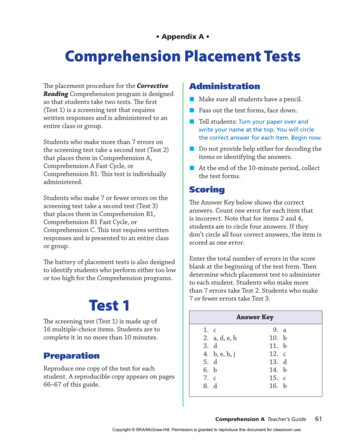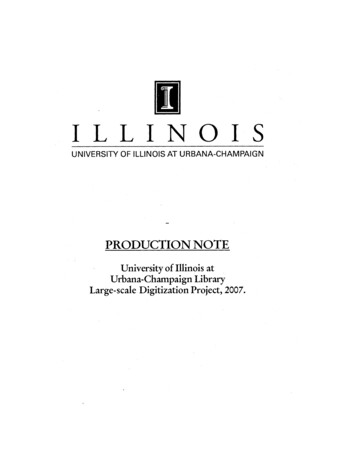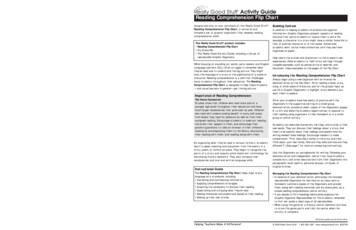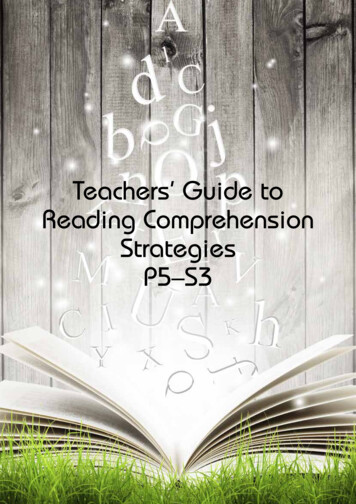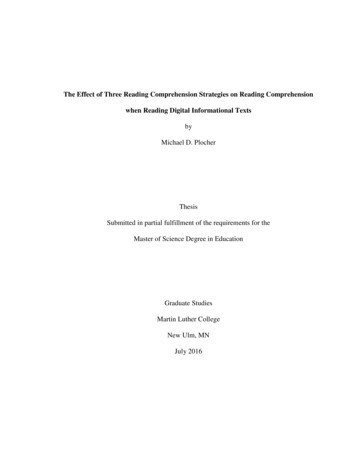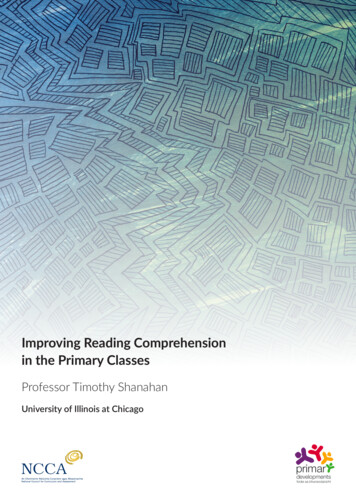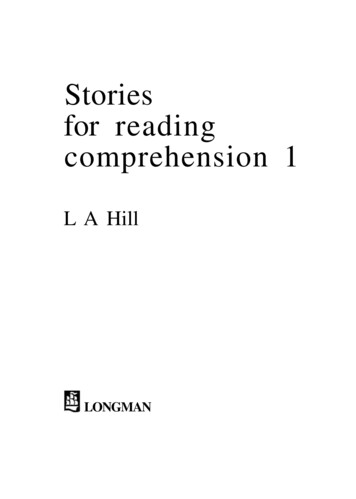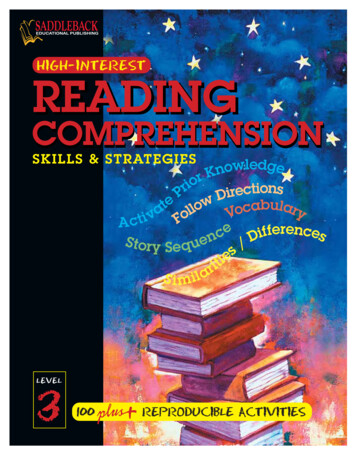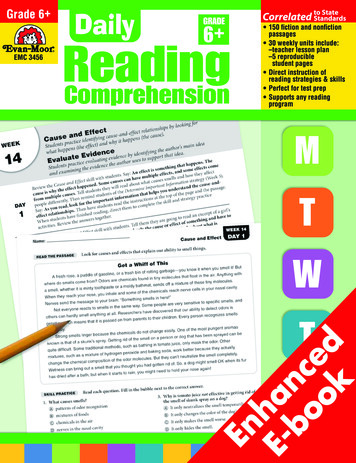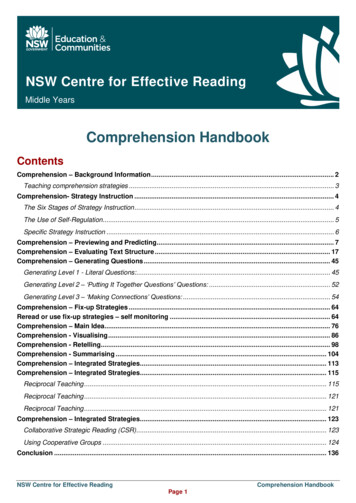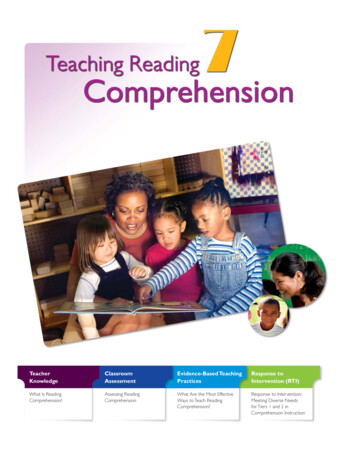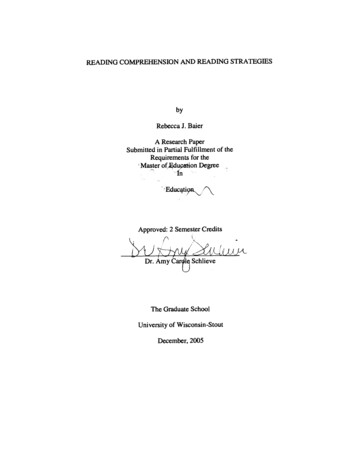
Transcription
READING COMPREHENSION AND READING STRATEGIESRebecca J. BaierA Research PaperSubmitted in Partial Fulfillment of theRequirements for theMaster-. o f u Degreeo n,r;ltApproved: 2 Semester CreditsThe Graduate SchoolUniversity of Wisconsin-StoutDecember, 2005
The Graduate SchoolUniversity of Wisconsin-StoutMenomonie, WIAuthor:Rebecca J. BaierTitle:Reading Comprehension and Reading StrategiesGraduate Degreemajor:Research Advisor:MS EducationDr. Amy Carole SchlieveMonthNear: December, 2005Number of Pages: 53Style Manual Used: American Psychological Association, stheditionABSTRACTIt was hypothesized that students who use reading comprehension strategies whilereading retain more information and comprehend the text better. It was also hypothesizedthat students who have good reading comprehension skills perform better on readingcomprehension tests. Fourteen sixth grade students in a small town private school wereidentified for this study. The students were given the Qualitative Reading Inventory - 4reading comprehension pretests after determining their individual reading levels. Thestudents then began a six-week long study of the Self-Questioning Reading Strategy. Atthe conclusion of the study the students were again given the Qualitative ReadingInventory - 4 reading comprehension posttests. A comparison of the percent correct onthe reading comprehension pretests and posttests was taken. Twelve of the fourteen sixthgrade students demonstrated improvement in the reading comprehension scores. Two ofthe fourteen students resulted in no change in the reading comprehension scores. There
were no students that exhibited a decline in scores. It was concluded that the sixth gradeliterature students performed better on the posttests where they used the Self-QuestioningReading Strategy. Further study recommendations included completing this study ondifferent age groups or using different reading comprehension strategies.
The Graduate SchoolUniversity of Wisconsin-StoutMenomonie, WIAcknowledgementsI would like to thank Dr. Amy Carole Schlieve for her assistance and patience in theprocess of writing this paper. I would also like to thank my family; Mom, Dad, Joe, LittleJoe, Luke, Hannah, Roger and Orpha for their unending help and support.
TABLE OF CONTENTS.ABSTRACT .11.List of Tables .vllChapter I: Introduction.1Statement of the Problem .6Research Hypothesis .6Limitations .7Chapter 11: Literature Review .-8Chapter 111: Methodology.-20Subject Selection and Description .20Instrumentation .-20Data Collection Procedures .20Data Analysis .21Limitations .21Chapter IV: Results .22Item Analysis .23Conclusion .-36Chapter V: Discussion .37Discussion .37Limitations .38Conclusions .38Recommendations .38
References .39Appendix A: IRE3 Form .-42Appendix B: Parent Letter .-43Appendix C: Consent to Participate .44Appendix D: Self-Questioning Strategy for Fiction Text .47Appendix E: Self-Questioning Strategy for Non-fiction Text .50Appendix F: Student Profile Sheet .53
Inventory - 4 reading comprehension posttests. A comparison of the percent correct on the reading comprehension pretests and posttests was taken. Twelve of the fourteen sixth grade students demonstrated improvement in the reading comprehension scores. Two of the fourteen students resulted in no change in the reading comprehension scores. There
